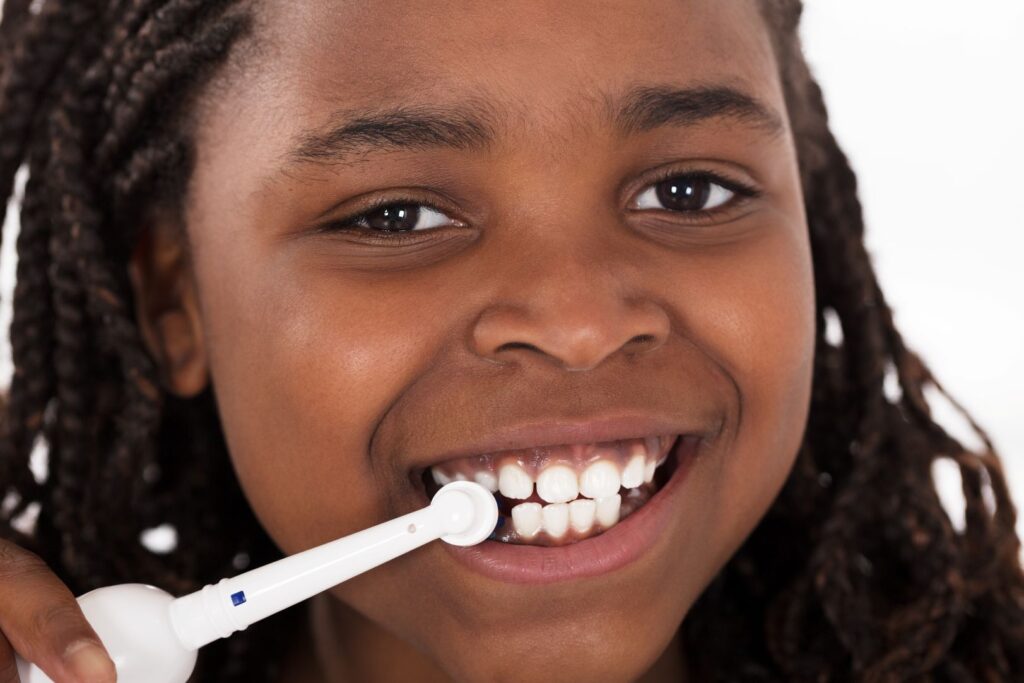
Keeping your child’s teeth clean and free of harmful bacteria is essential to prevent cavities, but when it comes to toothbrushes, not all devices are created equally. Though studies have shown that there is little difference between the effectiveness of manual versus electronic varieties, ionic brushes were found to dramatically reduce plaque and gingivitis in both the long and short term. So, how do you know when your little one is ready to upgrade to a power toothbrush? Here are a few important rules of thumb.
Smart Smiles: The Best Brushes from Birth and Beyond
Starting from birth, parents should begin wiping their baby’s mouth gently with a wet cloth or gum wipe after each meal. As they grow and their teeth begin to emerge, this activity should be substituted with a baby toothbrush and children’s toothpaste. Always use a soft-bristled brush and begin flossing when their teeth begin growing next to each other.
By the age of three, they should be ready to graduate from a baby toothbrush to a child’s toothbrush. Make sure it is still soft-bristled, and that you are supervising them while they brush (until around eight years of age).
Electric Avenue: Age 6 to 10
Once your child is approximately six years old, they should be ready to try an electric toothbrush. There are many varieties available, from relatively inexpensive spin brushes that feature favorite characters, lights, and sounds, to full-sized, feature-packed adult versions. Though all work well, the more expensive ultrasonic brushes with replacement heads are the best value, as they are more effective at preventing oral health problems. Furthermore, because you can instantly swap the brush heads, one brush body can be used by the whole family.
Keep in mind that even if your child is mature enough for a powered toothbrush, you should still supervise them during their oral hygiene routine until they’re around eight years old, just to ensure that they have proper technique and aren’t missing any hard-to-reach spots. This can not only help prevent cavities and gum disease, but it can also help you keep apprised of any issues that may need to be mentioned to your child’s pediatric dentist.
The Future is Now: Age 10+
Once your child has reached the age of 10 years old, they should be ready to begin using an adult-sized toothbrush. Your dentist can recommend a good brush strength, but in general it is best to stick to as soft a bristle as possible. You can choose either manual or electric but do make sure your child is brushing twice a day and flossing once a day no matter which type of brush you purchase.
Remember, electric toothbrushes can help reduce more plaque and prevent gum disease if used regularly, but it is important to monitor your child’s brushing technique until they’re at least eight years old to ensure that they are using their oral hygiene tools properly. Armed with a great brush, trusty floss, a fantastic fluoride toothpaste, and the guidance of a caring adult, their smile will stay healthy and strong for a lifetime!
About Dr. Steele
For nearly 30 years, Dr. Linda Steele has been helping make patients smile. She loves treating kids, helping them learn how to care for their own teeth and gums at home so they have a foundation of excellent oral health to carry them into adulthood. Dr. Steele earned her Doctor of Dental Surgery at Baylor College of Dentistry, which is now known as Texas A&M Health Science Center at Dallas School of Dentistry, and her pediatric residency at Children’s Mercy Hospital Kansas City, MO. She is a current, active member of the American Academy of Pediatric Dentistry, the American Dental Association, the Southwestern Society of Pediatric Dentistry, and the Texas Dental Association. To schedule an appointment for your child for a cleaning and check-up, visit our website or call us today at 972-315-3355.

